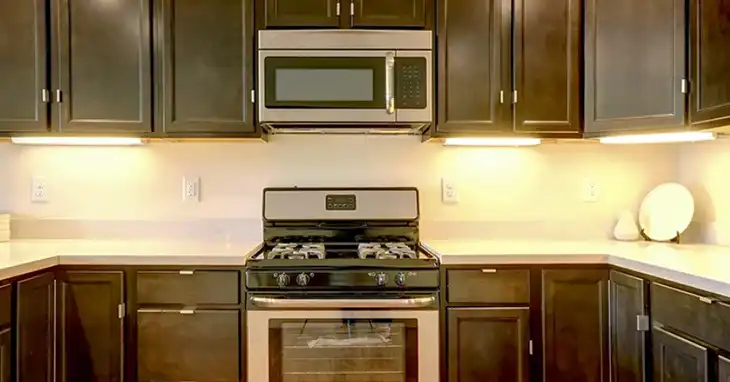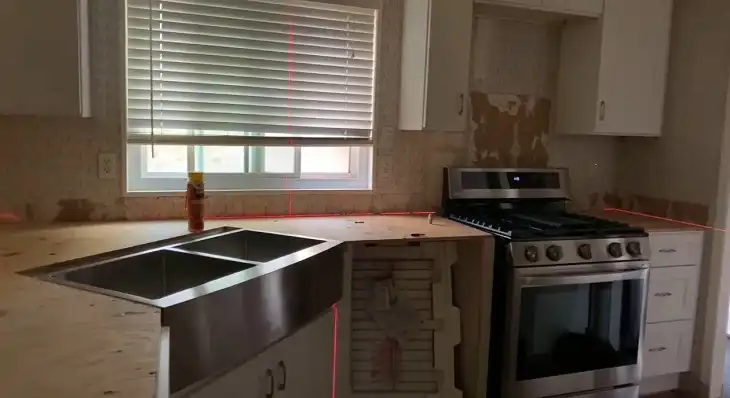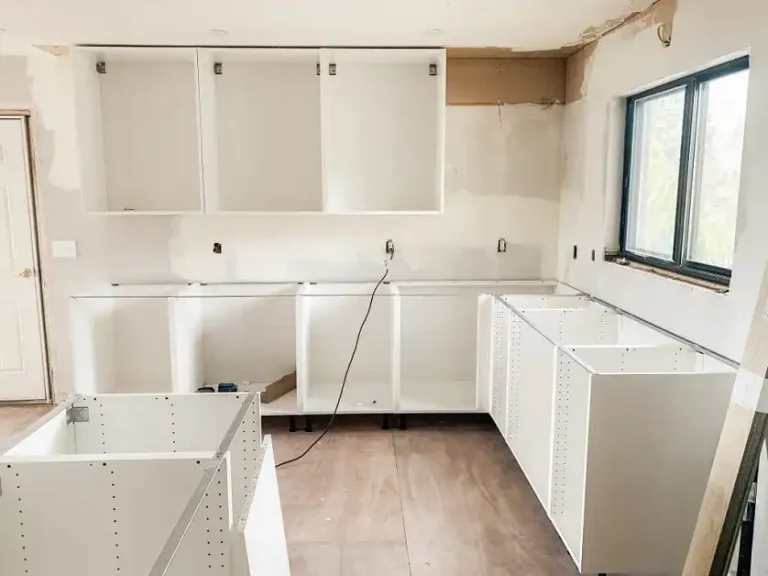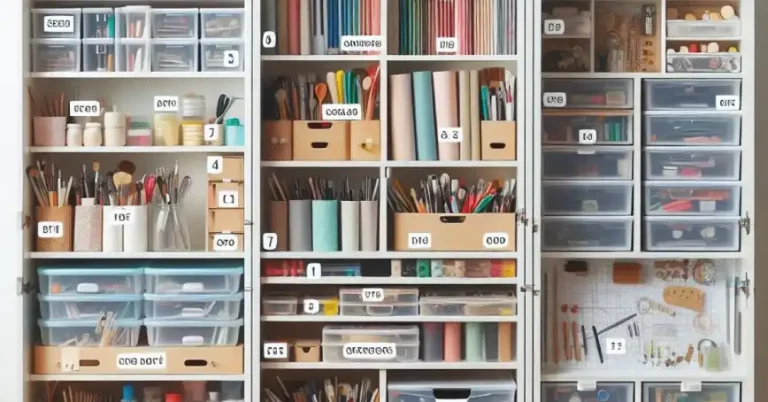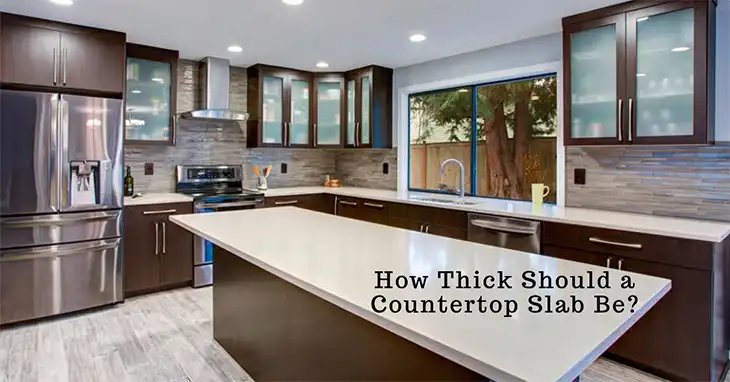How High Should A Kitchen Backsplash Reach?
A kitchen backsplash serves as a protective barrier against splatters and spills while also enhancing the overall aesthetic appeal of your cooking space. Choosing the right backsplash height can make a significant difference in both functionality and style.
While standard kitchen backsplash height is about 4 inches, depending on your cooking needs, you can make it slightly higher.
From the standard 4-inch backsplash to striking ceiling-height designs, this article will explore the various options and help you make an informed decision.
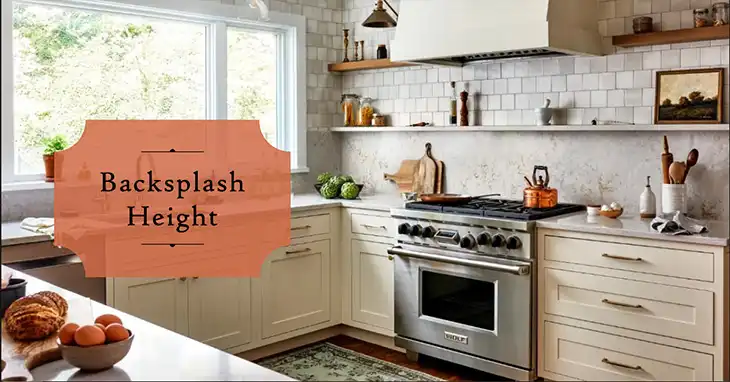
Standard Backsplash Heights (3-10 Inches)
The standard backsplash height typically ranges from 3 to 10 inches. This height range is a popular choice for many homeowners due to its versatility and ease of installation. A standard backsplash height offers several advantages, including affordability and compatibility with most kitchen designs. It also works well with standard countertop overhangs, creating a cohesive look.
However, there are a few potential drawbacks to consider. A standard backsplash height might not offer enough protection for heavy cooking, as it may not extend far enough to catch splatters and spills from stovetops or prep areas. Additionally, it can be visually unremarkable, especially in larger kitchens or those with high ceilings. Lastly, if the bottom of your upper cabinets is not perfectly aligned with the top of the backsplash, it can create an awkward visual break.
Full Backsplash Heights (15+ Inches)
For those seeking maximum protection and a polished look, a full backsplash height of 15 inches or more can be an excellent choice. These taller backsplashes offer several benefits:
- Increased protection: A full backsplash extends further up the wall, providing ample coverage against spills and splatters, especially behind stovetops and prep areas.
- Cohesive and polished appearance: A full backsplash visually extends the countertop, creating a seamless and cohesive look throughout the kitchen.
- Material continuity: You can use the same material as your countertops for the backsplash, creating a seamless flow and highlighting the beauty of the chosen material.
- Camouflaging imperfections: A full backsplash can effectively hide minor imperfections or irregularities on the wall behind the countertop.
Going Higher: Ceiling-Height Backsplashes
For those seeking a truly dramatic and luxurious look, a ceiling-height backsplash can be an excellent choice. This design element makes a bold statement and can visually open up a kitchen, especially in rooms with high ceilings. Ceiling-height backsplashes are particularly well-suited for minimalist or contemporary kitchens with clean lines, as they create a seamless and uninterrupted visual flow.
One of the advantages of a ceiling-height backsplash is the opportunity to incorporate bold colors or patterns, as the backsplash becomes a focal point in the space. However, it’s important to note that this option typically comes with a higher cost due to the increased material and installation requirements. Additionally, a ceiling-height backsplash might overwhelm smaller kitchens or create a disconnected feeling from the rest of the space. Maintenance and cleaning can also be more challenging, as reaching higher areas can be difficult.
How High Should Your Backsplash Be
When selecting the appropriate backsplash height for your kitchen, several factors should be taken into consideration:
- Cooking Style:
- Light cooking: A standard backsplash height may suffice for those who don’t engage in heavy cooking or frequent splattering.
- Heavy cooking: If you frequently cook messy dishes or fry foods, a full or higher backsplash is recommended to provide adequate protection against splatter and grease.
- Kitchen Size:
- Small kitchens: Standard or shorter backsplashes can help visually enlarge the space and prevent a cramped feeling.
- Large kitchens: You can accommodate taller backsplashes for a more dramatic and impactful look without overwhelming the space.
- Overall Kitchen Design:
- Traditional kitchens: Standard or slightly higher backsplashes often complement the style and charm of traditional kitchen designs.
- Modern kitchens: Full or ceiling-height backsplashes can enhance the clean lines and contemporary aesthetic of modern kitchen designs.
- Material Selection:
- Tile: Standard heights work well with tile backsplashes, while mosaics or intricate patterns can be showcased with creative, higher backsplash designs.
- Stone slabs: Full or ceiling-height backsplashes can beautifully showcase the natural beauty and veining of stone materials like granite or marble.
- Sheet metal: Metal backsplashes can be easily customized to any desired height, making them a versatile choice.
- Budget:
Standard backsplashes are generally the most affordable option, requiring less material and installation effort. As the backsplash height increases, so do the material and labor costs.
How to Design Stylish Backsplashes that Are Functional As Well
When planning your backsplash height, consider the following design elements to ensure both functionality and visual appeal:
Matching Backsplash Height:
- Align the top of the backsplash with the bottom of your upper cabinets for a clean, cohesive line.
- Integrate the backsplash with the countertop overhang for a seamless transition.
Backsplash Height Variations:
- Incorporate a higher backsplash behind the stovetop for added protection against splatters and grease.
- Consider a shorter backsplash behind the sink area for easier faucet access if the faucet is positioned close to the wall.
Open Shelving and Pot Racks:
- Adjust the backsplash height to visually frame open shelves or create a dedicated backsplash for pot racks.
Summing Up
Choosing the right backsplash height is a crucial decision that can significantly impact the functionality and aesthetic appeal of your kitchen. By considering factors such as cooking style, kitchen size, design style, material selection, and budget, you can find the perfect balance between protection and visual appeal.
Remember, the backsplash is more than just a functional element – it’s an opportunity to showcase your personal style and elevate the overall design of your kitchen. Whether you opt for a classic standard height, a sleek full-height backsplash, or a dramatic ceiling-height design, the right choice can transform your cooking space into a beautiful and practical haven.

